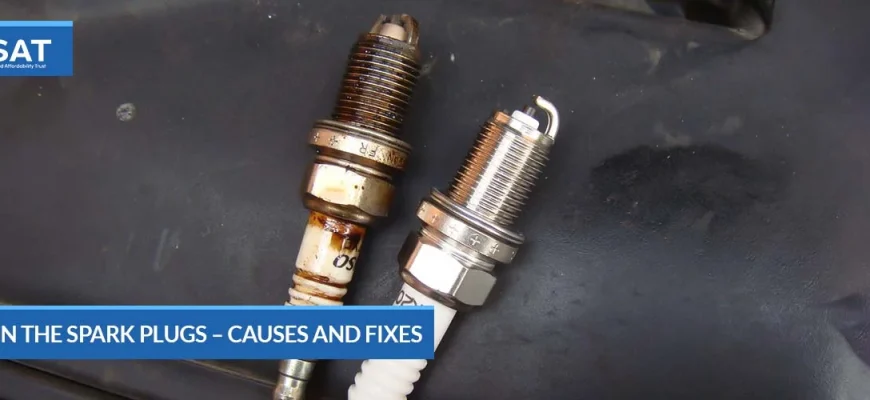The spark plug, a small yet vital component of an internal combustion engine, plays a crucial role in ensuring smooth engine operation. However, when oil contamination occurs, it can lead to significant performance issues. In this article, we will delve into the causes, symptoms, and solutions for diagnosing and resolving oil contamination on spark plugs.
- Understanding Spark Plug Functionality
- Identifying Oil Contamination
- Common Causes of Oil Contamination
- 1. Worn Piston Rings
- 2. Valve Seal Failure
- 3. Oil Overfill
- 4. Cracked Cylinder Head or Gasket Failure
- Diagnosing the Issue
- Resolving Oil Contamination
- 1. Replace Spark Plugs
- 2. Repair or Replace Piston Rings
- 3. Replace Valve Seals
- 4. Address Oil Overfill
- 5. Repair Cylinder Head or Gasket
Understanding Spark Plug Functionality
Before we tackle oil contamination, it’s essential to understand what role spark plugs play. They ignite the air-fuel mixture in the engine’s cylinders, creating the combustion necessary for power generation. A clean and properly functioning spark plug ensures efficient combustion, while contamination can lead to misfires, reduced performance, and increased emissions.
Identifying Oil Contamination
Recognizing oil contamination on spark plugs is the first step toward resolution. Here are some common symptoms:
- Excessive Oil Deposits: A spark plug with oil contamination will often have a shiny, wet appearance, particularly around the electrode.
- Engine Misfires: If the spark plugs are contaminated, they may not ignite the air-fuel mixture effectively, leading to engine misfires.
- Poor Fuel Economy: Increased oil consumption can lead to poor fuel economy, as the engine struggles to maintain optimal performance.
- Rough Idling: Oil contamination may cause the engine to run inconsistently, resulting in rough idling and decreased power output.
Common Causes of Oil Contamination
Understanding the root cause of oil contamination is critical for effective resolution. Here are several common culprits:
1. Worn Piston Rings
Piston rings help seal the combustion chamber. Over time, they can wear out, allowing oil to enter the combustion chamber and coat the spark plugs.
2. Valve Seal Failure
Valve seals prevent oil from leaking into the engine’s cylinders. If these seals deteriorate, oil can seep into the combustion chamber, leading to contamination.
3. Oil Overfill
Overfilling the engine oil can cause excess pressure, forcing oil into places it shouldn’t be, including on the spark plugs.
4. Cracked Cylinder Head or Gasket Failure
In more severe cases, a cracked cylinder head or a blown head gasket can allow oil to mix with the fuel, leading to contamination.
Diagnosing the Issue
To diagnose oil contamination, follow these steps:
- Remove the spark plug and inspect it for oil deposits.
- Check the engine oil level and quality; if it appears milky or frothy, it may indicate a coolant leak.
- Examine the piston rings and valve seals for wear or damage.
- Perform a compression test to assess the integrity of the piston rings and cylinder head.
Resolving Oil Contamination
Once you’ve diagnosed the cause, it’s time to resolve the issue. Here are some common solutions:
1. Replace Spark Plugs
If the spark plugs are heavily contaminated, replacing them is essential to restore engine performance.
2. Repair or Replace Piston Rings
If worn piston rings are the issue, they will need to be replaced. This process can be labor-intensive but is crucial for long-term engine health.
3. Replace Valve Seals
Replacing worn valve seals can prevent oil from leaking into the combustion chamber.
4. Address Oil Overfill
If oil overfill is the problem, simply draining the excess oil can resolve the issue.
5. Repair Cylinder Head or Gasket
In cases of a cracked cylinder head or blown gasket, professional repair or replacement is necessary to prevent further contamination.
Oil contamination on spark plugs is a sign of underlying engine issues that require immediate attention. By understanding the causes, symptoms, and solutions, you can ensure your vehicle runs smoothly and efficiently. Regular maintenance and timely diagnostics can help prevent oil contamination and extend the life of your engine components.










The details about symptoms of oil contamination are spot on. I can relate to some of these issues with my own car.
I found the section on common causes very enlightening. It really helps to understand what to look for when troubleshooting!
I learned so much about how oil contamination affects engine performance. The symptoms section was particularly helpful!
This article is a must-read for anyone interested in automotive maintenance. It breaks down complex issues into easy-to-understand points.
Great insights on diagnosing oil contamination on spark plugs! I appreciate the clear explanations and practical solutions.
Fantastic article! It’s clear that a lot of research went into this. I feel more equipped to handle spark plug issues now.
This article provides an excellent overview of spark plug functionality and the impact of oil contamination. Very informative!